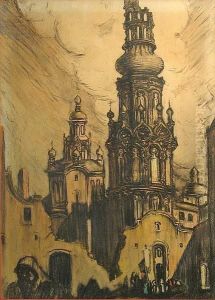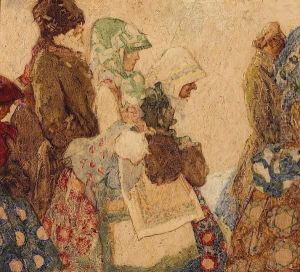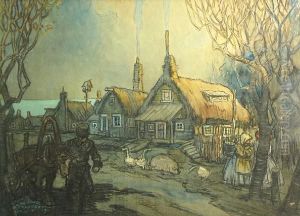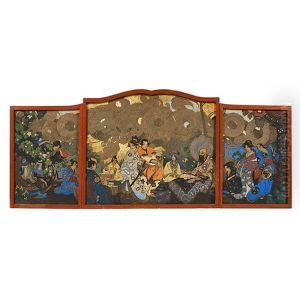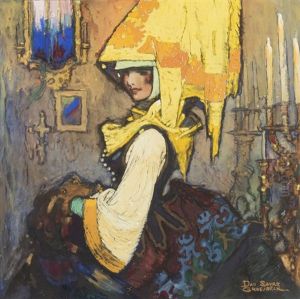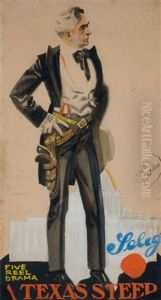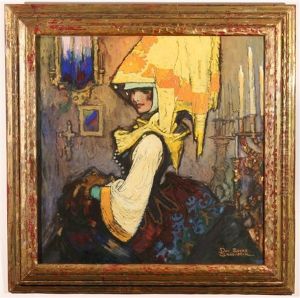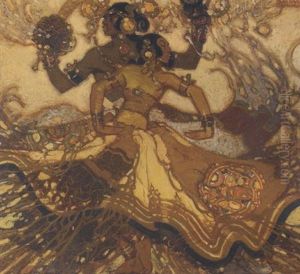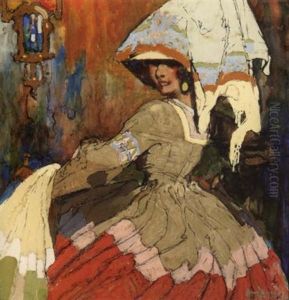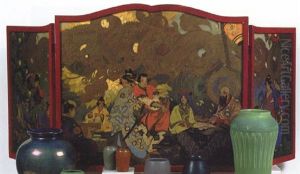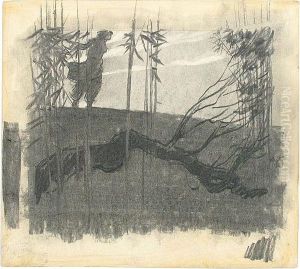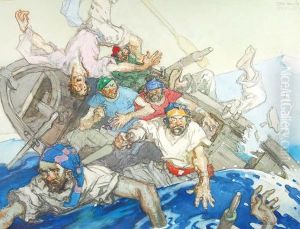Daniel Sayre Groesbeck Paintings
Daniel Sayre Groesbeck was an American artist and illustrator, born in Illinois on August 28, 1879. He was known for his versatility in different media, including oil paintings, murals, and illustrations. His work often reflected a fascination with exotic locales and historical themes, which can be attributed to his extensive travels and interest in history.
Groesbeck studied at the Art Institute of Chicago and later attended the Académie Julian in Paris, where he honed his artistic skills. His early work included illustrations for books and magazines, which helped him gain recognition in the art world. His illustrations often graced the pages of popular publications of the time, capturing the public's imagination with their detail and vibrancy.
In the 1920s, Groesbeck's career took a significant turn when he moved to California, where he became involved in the burgeoning film industry. He worked as a set designer and art director for Hollywood studios, contributing to the visual storytelling of films. His most notable work in this field was his collaboration with director Cecil B. DeMille, for whom he created concept art and storyboards for epic films such as 'The Ten Commandments' (1923) and 'The King of Kings' (1927). This work required a grand sense of scale and historical accuracy, both of which Groesbeck provided with great skill.
Aside from his film work, Groesbeck continued to create paintings and murals, many of which were inspired by his travels to Europe, the Middle East, and Asia. His works were characterized by a dramatic use of light and shadow, as well as a keen eye for architectural detail. He was also known for his historical paintings, which featured scenes from different eras and cultures, rendered with an illustrator's attention to narrative.
Groesbeck's career spanned several decades and his contributions to both the fine arts and the film industry were significant. He was a member of various art associations and exhibited his work widely. Despite his success in the film industry, he never abandoned painting and continued to create art until his later years.
Daniel Sayre Groesbeck passed away on February 15, 1950, in Santa Barbara, California. His legacy is preserved in the collection of his works held by museums, as well as the impact he had on the art direction of early Hollywood films. Today, he is remembered as an artist who bridged the gap between the fine arts and the silver screen, bringing a painterly touch to the visual language of cinema.
